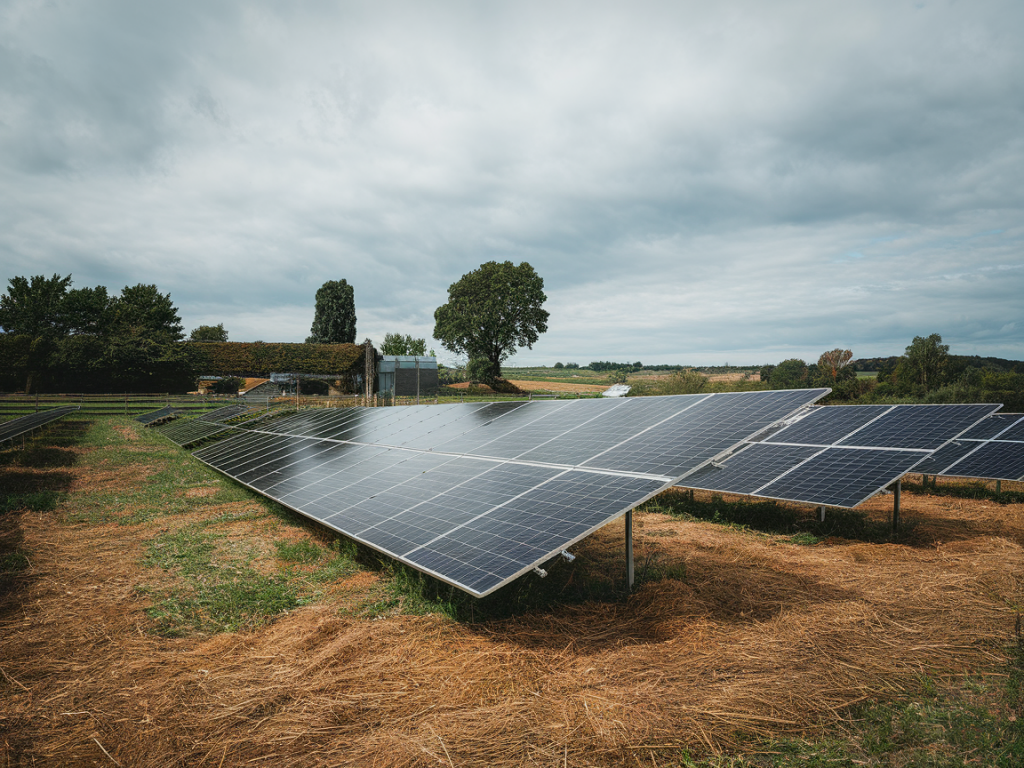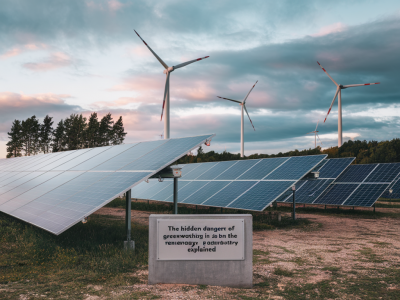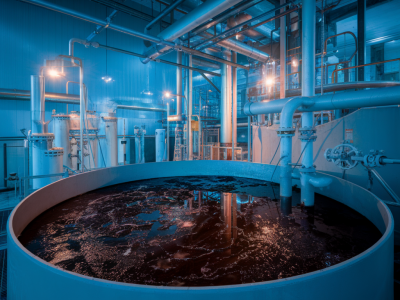
The intersection of renewable energy and agriculture has birthed a groundbreaking concept: agrivoltaics. As someone deeply invested in exploring innovative solutions for a sustainable future, I find this fusion of solar power and farming incredibly fascinating. Agrivoltaics not only paves the way for lower-carbon energy production but also enhances agricultural output and land use efficiency. It's a win-win solution that merges two vital aspects of sustainability. But how does it work, and why is it becoming such a game-changer?
What is Agrivoltaics?
Agrivoltaics, often referred to as agrisolar or dual-use solar, describes a system where solar panels are installed above agricultural land, allowing both energy generation and farming activities to coexist. Unlike traditional solar farms, which often occupy significant tracts of land, agrivoltaic systems strategically place solar panels in a way that lets sunlight filter through to the crops below. This harmonious coexistence of crops and solar panels means land can be optimized for both energy and food production without sacrificing one for the other.
The underlying principle is simple yet effective: solar panels provide shade, which in many cases can help reduce water evaporation and shield crops from extreme weather conditions. In return, crops can influence the microclimate under the panels, potentially improving their efficiency. These symbiotic benefits make agrivoltaics an exciting solution for sustainable land and energy management.
How Does Agrivoltaics Work?
At its core, agrivoltaics involves careful planning and design. The height, spacing, and orientation of solar panels are meticulously calibrated to suit the specific needs of both the crops and the solar system. Some setups use fixed panels to create a semi-shaded environment, while others rely on tilting or rotating panels to follow the sun's path, maximizing energy capture while adjusting light availability for the crops underneath.
The system's success depends heavily on the compatibility of crops with this dual-use setup. Crops that thrive under partial shade—such as lettuce, spinach, potatoes, and certain fruits—are excellent candidates for agrivoltaic farms. The reduced exposure to direct sunlight can, in some cases, even help improve the quality of the produce and reduce heat stress on plants.
For instance, Sun’Agri, a French agrivoltaics pioneer, has been spearheading pilot projects to determine optimal configurations in vineyards, orchards, and vegetable fields. Their technology uses connected sensors and artificial intelligence to adjust panel positioning based on real-time weather and crop requirements, ensuring maximum synergy between energy production and agriculture.
The Benefits of Agrivoltaics
- Optimized Land Use: As arable land becomes scarcer due to urbanization and climate change, agrivoltaics offers a practical solution for utilizing land more efficiently, addressing both energy and food security simultaneously.
- Increased Solar Efficiency: The microclimatic effects of crops (e.g., reduced temperature around the panels) can enhance the efficiency of solar panels, especially in hot and arid regions.
- Improved Crop Conditions: Solar panels can provide shade, reducing heat stress and water evaporation while protecting crops from hail, wind, and excessive radiation.
- Economic Opportunities: Farmlands hosting agrivoltaic systems can benefit from two revenue streams—agricultural sales and solar energy production.
- Potential Reduction in Water Use: By blocking direct sunlight, the shaded areas under the panels can retain soil moisture for longer periods, reducing the need for irrigation in some cases.
Global Adoption and Success Stories
The global agrivoltaics market is rapidly expanding as governments, researchers, and businesses recognize its potential. In Germany, agrivoltaics is being tested for large-scale implementation, with a focus on staple crops like potatoes and wheat. Meanwhile, in Japan, agrivoltaics has been instrumental in addressing farmland abandonment, enabling farmers to continue crop cultivation while generating additional income through solar power.
One notable example comes from India, where an agrivoltaic project piloted in Gujarat integrates solar panels with fruit trees and other crops. This approach not only generates clean energy but also contributes to rural electrification and supports local farmers by creating dual income opportunities. Similarly, in the U.S., companies like NextEra Energy are exploring the potential to combine solar farming with grazing lands, allowing livestock to coexist with renewable energy systems.
Challenges and Considerations
While agrivoltaics holds immense promise, it is not without its challenges. High upfront investment is one major hurdle, as designing specialized setups that accommodate both farming and solar requires significant capital. Additionally, there is a learning curve for farmers to adapt to this integrated approach, including understanding the nuances of crop selection and panel management.
Another consideration is regional variance in viability. For instance, the benefits of agrivoltaics in arid climates differ from those in temperate or colder zones. Successful implementation often involves technical expertise, research, and pilot projects tailored to the specific needs of a location.
Is Agrivoltaics Right for You?
If you’re a farmer or a landowner considering solar energy, agrivoltaics may be worth exploring. The dual-use approach can maximize your land’s productivity while contributing to sustainable development goals. Additionally, many countries offer financial incentives for renewable energy projects, which can offset some of the initial costs related to setting up an agrivoltaic system.
Still, it's essential to carefully evaluate the crops you grow, your local climate, and the availability of technology partners with experience in designing and implementing such systems. Consulting with agrivoltaic experts or companies like BayWa r.e., which has been leading in large-scale agrisolar projects, can provide you with a clearer path forward.
As agrivoltaics continues to gain traction, it's exciting to think about the potential impact this innovation could have on global food and energy systems. Not only does it address the urgent need for renewable energy, but it also solves some of agriculture's most pressing challenges, offering a pathway to a more sustainable and resilient future.

